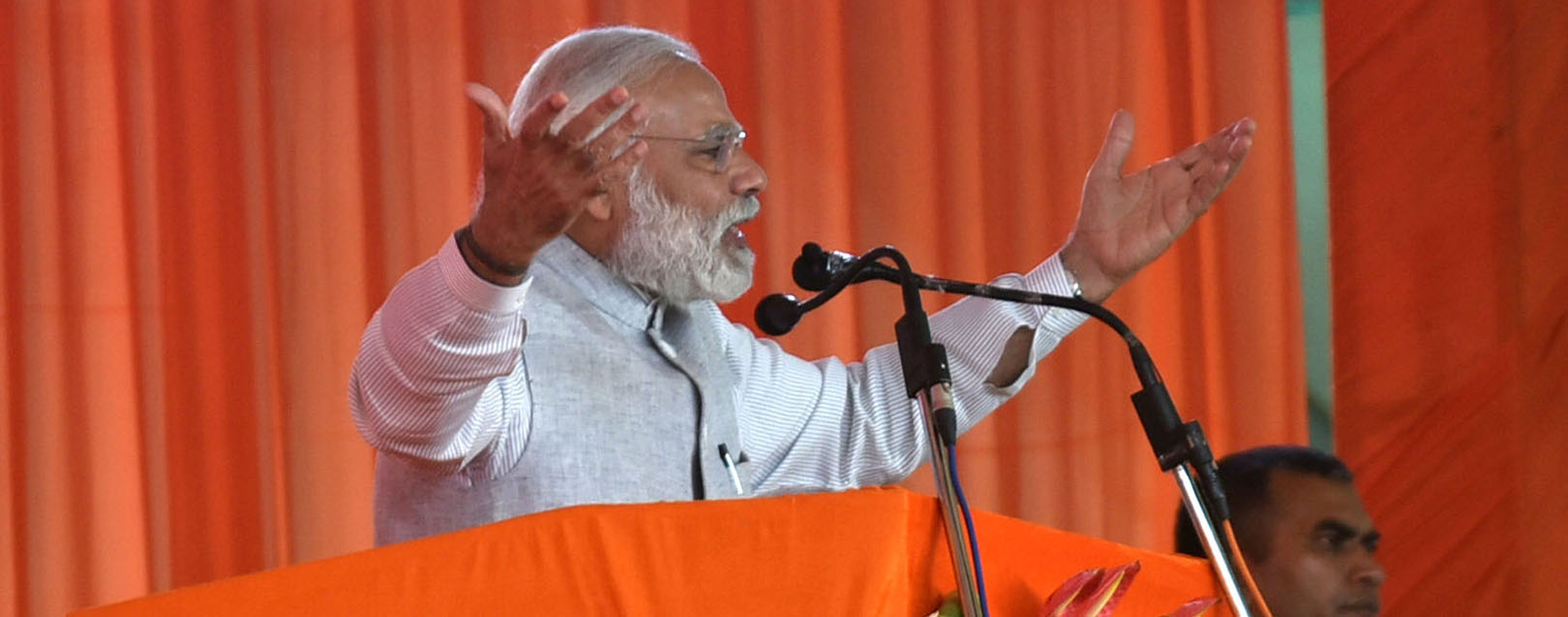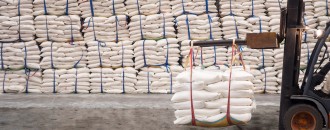
March ending: Lessons learnt, new plans by the Government
By Abin Daya
This is the time of the year we close our books, reflect on what has happened over the past 12 months, and make plans for the next year. Same is the case with the government.
This week, we bring you a snapshot of public finances, especially the twin deficits, as of Feb 2017, and how we expect the year to end. While both deficit figures have breached the budgeted numbers as of Feb, there is a chance that strong revenue growth in March could help pull them back to below the threshold. Will need to wait for formal data to come from Ministry of Finance to see if that happens.
Continuing with an update on last week’s story about Methyl Bromide fumigation at Indian ports, the government has decided to extend the exemption for another 3 months, while they work out an alternative solution.
Managing prices is always a tricky task. When they rise too high, supplies need to be improved, to provide relief to consumers. If they fall too low, farmers might not get a decent price, which might make them move away from the crop, and thereby impact supplies in future. Hence supplies need to be restricted. This is a common theme, and barely 3 months after it withdrew the 10% import duty on wheat, the government has re-imposed the same to curb supplies, and thereby support prices. Looks like we have a problem of plenty currently!
Another industry which is doing okay, but not so well is steel. While production and growth figures have improved, and the country has become a net exporter of the commodity after a gap of three years, rising input costs and inability to pass on the increase to customers, has affected the profitability of producers.
Public finances – a snapshot of Feb 2017
- As we end another financial year, we wait for the final data to come out and assess how the government has managed its finances in the previous year, and to understand the direction going forward
- While we will have to wait for some more time for the final picture to emerge, here is a small analysis based on what data we have for the 11 months of the FY, till Feb 2017
- The most watched for data is the one on deficits, both fiscal deficit as well as the revenue deficit, considering the government’s commitment to manage the same under specified thresholds

- As per data available till Feb 2017, both fiscal deficit and revenue deficit overshot the Budget Estimates, and it will be a tough ask for the government to bring them within stated thresholds by 31 Mar 2017
- Against a target of Rs.5.34 Lakh Crores (L Cr), the fiscal deficit has hit a figure of Rs.6.05 L Cr, thanks to a significant drop in revenue growth in Dec and Jan
- In Dec 2016, fiscal deficit for the month grew by more than 8 times y-o-y, from Rs.4,700 Cr a year back, to Rs.43,000 Cr in the current year
- Revenue deficit has hit Rs.4.4L Cr, against Budget Estimates of Rs.3.5L Cr; during the same period last year, revenue deficit was at Rs.3.9L Cr
- Considering that March is a low deficit month due to the revenue recovery that happens during the month, there is possibility that the margin of overshooting might come down
- However, it remains to be seen if the revenue growth during the month is so strong as to wipe out the excess completely

- Looking at the revenue and expenses, Budget Estimates had factored revenues to grow at 19.8% (from Rs.12.1L Cr to Rs.14.4L Cr) and expenses to grow at 11.6% (from Rs.17.7L Cr to Rs.19.8L Cr)
- However, YTD Feb 2017, revenues have grown only by 16.7% y-o-y thus generating a gap of almost Rs.3L Cr to be bridged in Mar 2017 to achieve the Budget Estimates (BE)
- Growth in expenses, however, has been higher than the projection at 12.7%, hitting a total of Rs.17.5L Cr in 11 months of the fiscal

- Looking deeper into where this revenue comes from, against a projected growth of 15.2%, direct tax collections have only grown by 10.5% y-o-y , as of Feb 2017
- There is a significantly large gap of Rs.2.4L Cr to be covered in March 2017, if we are to achieve BE numbers. Is this possible?
- Indirect taxes, on the other hand, have grown by 23% y-o-y, against a projected growth of 8.6%
- While the indirect taxes figure till Feb 17 has already crossed the full year figure of FY16 (Rs.7.4L Cr as against Rs.7.2L Cr), it still needs a small figure of Rs.40,000 Cr to hit the BE numbers

- Direct tax collections in Mar 2016 accounted for 25% (Rs.1.8L Cr) of the entire collections for the year (Rs.7.4L Cr)
- Extrapolating this to current year figures, it seems possible that we will recover about Rs.2L Cr in Mar 2017, thereby taking the overall figure to Rs.8.16L Cr, which would still be lower than the BE of Rs.8.5L Cr
- March 2016 collections for indirect taxes came to about Rs.1.2L Cr, about 17% of total collections for the year
- Significant uptick in service tax and excise duty collections helped to push the numbers up to a large extent
- If we assume similar pattern of collections for this year too, we will end the year with total indirect tax collections of Rs.8.9L Cr, well above the BE of Rs.7.8L Cr
- This estimated recovery of Rs.3.55L Cr would be sufficient to rein in the Fiscal deficit to below the BE, provided expenses during Mar 2017 are kept in check
- Looking at it from a different perspective, the government’s capital expenditure has fallen below last year, to record a y-o-y decline of 1.5%
- March is not a good month usually for capital expenditure, and considering the high level of Fiscal Deficit, it is unlikely that there was good use of budget allocation on that front during the last month
- Granted that a one month dip in capital activity would not impact much, but we can only hope that the coming year will see much more activity on that front
Fumigation for agri imports – update on last week’s item
- As was mentioned in last week’s report, the Centre has extended permission for fumigation of agricultural imports with Methyl Bromide at Indian ports till June 2017
- The relaxation of fumigation regulations, which was in place for more than a decade, would have otherwise ended on 31 Mar 2017
- As per the Government Order, consignments of all imported agricultural commodities whose Bill of Lading is dated 30 Jun 2017 or prior, and for which fumigation by Methyl Bromide has been stipulated under the Plant Quarantine Order, will be allowed without offshore fumigation
- Methyl Bromide is an environmentally harmful chemical, and causes depletion of the ozone layer; the Agriculture Ministry is now working with the exporter countries to identify an alternate pest control measure which is both environment friendly and effective
Import duty on wheat and tur
- Centre has imposed a 10% import duty on wheat and tur dal to check the fall in prices in the domestic market
- Prices of agri commodities are under pressure due to improved availability after a bumper crop, and this has led to farm gate prices crashing significantly
- While the 10% import duty could lead to a slight firming up of prices, increasing the duty to 25% might make imports prohibitive
- Import duty on wheat was reduced to zero, from 10% in Dec 2016, to improve availability in the market and in an effort to control prices

- However, arrival of the new wheat crop in mandis, after a record production of 96.6Mn tonnes, as against 92.3Mn tonnes last year, has led to a crash in prices to below MSP levels
- Production of tur dal has also hit record levels by almost doubling to 4.23 million tonnes as against 2.56 million tonnes last year; market prices have been ruling well below the MSP for the past few weeks
- While the import duty might help firm up tur prices in the market, farmers might not benefit significantly, as most of the crop has already been sold
India becomes net exporter of steel
- Supported by stiff tariff barriers restricting imports, India has turned a net exporter of steel after a gap of three years
- The Indian steel industry has been outperforming the global industry and the other major players all through last year

- The trend appears to be continuing in 2017 too, with Jan and Feb clocking growth rates of 12% and 9% respectively, well above the global growth rates for the industry
- Imports fell by 65% to 6.6 Mn tonnes, while exports increased 77% to 6.62 Mn tonnes, thereby making India a net exporter of the commodity
- The trend looks to continue for the next few months too; however, profitability of mills are still under pressure due to rise in input costs
- Coking coal prices have softened from their record highs of Nov 2016, but producers might not get advantage of the same until later in the Apr-Jun quarter as they are utilising contracts booked in the Oct-Dec quarter
- Similarly, iron ore prices have gone up by as much as 43% in line with the global trend, and this is also affecting the profitability of producers
- To add to it, sluggish domestic demand has forced producers to reduce the prices of some of the products, which has hurt profitability even further
Bulk export of edible oil now permitted
- Government of India has issued orders permitting bulk exports of edible oils from India, ceding to a long-standing demand of the Indian exporters of edible oils
- Prior to the order, export of edible oils such as groundnut oil, sesame seed oil, soyabean oil and corn oil was permitted only in branded consumer packs of 5 kg
- The stipulation resulted in increased costs for both exporters and importers, as consignments needed to be unpacked for further processing, blending and repackaging to comply with local labelling and packaging laws
- Globally, almost 97% of edible oil trade takes place in bulk and the current amendment in policy makes it in line with global packaging norms
- India produces about 1.8Lakh tonnes of sesame seed oil, out of which only 7,000 tonnes is exported, thus losing market-share to other producing nations
- Same is the case for other products as well; with the changed guidelines, we could look at a higher volume of edible oil exports from India
Some numbers to note*
*figures in brackets indicate movement during the week
- FX reserves: $367.93Bn as on Mar 24, 2017, as against $366.78Bn in the previous week (+$1.15Bn)
- USD/INR: Rs.64.8450/$ (INR appreciated by Re 0.56)
- Indian Crude Basket: $51.36 (+3.5%)/Rs.3,334.79 (+2.68%)
- Equity Markets: Sensex 29,620.50 (+0.78%); NIFTY 9,173.75 (+0.72%)
- LIBOR: 6 Mths – 142 bppa; 12 Mths – 179 bppa
- MIBOR: Overnight – 7.37; 1 month – 6.61; 3 months – 6.67
.jpg)
Abin Daya the author of 'Basics of Trade: An India Perspective' is a FEMA expert, a career transaction banker, with close to 15 years of experience in corporate and transaction banking, in India.






 to success.
to success.